-
 Bitcoin
Bitcoin $85,241.3100
0.88% -
 Ethereum
Ethereum $1,597.5221
0.89% -
 Tether USDt
Tether USDt $0.9998
-0.01% -
 XRP
XRP $2.0841
0.61% -
 BNB
BNB $590.1959
0.22% -
 Solana
Solana $139.3082
4.16% -
 USDC
USDC $0.9999
-0.01% -
 Dogecoin
Dogecoin $0.1580
1.99% -
 TRON
TRON $0.2418
-1.29% -
 Cardano
Cardano $0.6272
2.42% -
 UNUS SED LEO
UNUS SED LEO $9.3579
2.37% -
 Chainlink
Chainlink $12.7797
1.30% -
 Avalanche
Avalanche $19.5621
2.86% -
 Stellar
Stellar $0.2467
1.40% -
 Toncoin
Toncoin $2.9798
-0.36% -
 Shiba Inu
Shiba Inu $0.0...01214
1.76% -
 Hedera
Hedera $0.1661
0.58% -
 Sui
Sui $2.1403
1.35% -
 Bitcoin Cash
Bitcoin Cash $337.7260
2.14% -
 Hyperliquid
Hyperliquid $18.0656
8.27% -
 Polkadot
Polkadot $3.7297
0.81% -
 Litecoin
Litecoin $76.0123
0.66% -
 Dai
Dai $0.9999
-0.01% -
 Bitget Token
Bitget Token $4.4640
2.35% -
 Ethena USDe
Ethena USDe $0.9990
-0.01% -
 Pi
Pi $0.6448
5.54% -
 Monero
Monero $215.3607
-1.36% -
 Uniswap
Uniswap $5.2620
1.52% -
 OKB
OKB $50.8127
1.50% -
 Pepe
Pepe $0.0...07190
1.14%
What is PancakeSwap's AMM mechanism?
PancakeSwap's AMM on BSC uses a constant product formula and liquidity pools to enable decentralized token swaps, offering benefits like accessibility and efficiency.
Apr 09, 2025 at 05:28 pm

PancakeSwap is a decentralized exchange (DEX) built on the Binance Smart Chain (BSC) that utilizes an Automated Market Maker (AMM) mechanism to facilitate token swaps. The AMM model is a key component of decentralized finance (DeFi) platforms, enabling users to trade cryptocurrencies without the need for traditional order books. In this article, we will delve into the specifics of PancakeSwap's AMM mechanism, exploring how it functions, its benefits, and the role of liquidity pools.
Understanding the Basics of AMM
Automated Market Makers (AMMs) are algorithms that automatically set the price of assets in a liquidity pool based on a mathematical formula. Unlike traditional exchanges that rely on order books to match buyers and sellers, AMMs use liquidity pools to facilitate trades. In PancakeSwap, the AMM mechanism is powered by smart contracts that manage these liquidity pools.
The core of PancakeSwap's AMM is the constant product formula, often represented as x * y = k. Here, x and y represent the quantities of two different tokens in a liquidity pool, and k is a constant value. When a user swaps one token for another, the smart contract adjusts the quantities of x and y to maintain the constant k, thus determining the price of the tokens.
Liquidity Pools and Liquidity Providers
Liquidity pools are at the heart of PancakeSwap's AMM mechanism. These pools are collections of tokens locked in a smart contract that users can trade against. Liquidity providers (LPs) are individuals or entities that deposit an equal value of two tokens into a liquidity pool, thereby enabling trading on the platform.
When LPs add liquidity to a pool, they receive liquidity provider tokens (LP tokens) in return. These tokens represent their share of the pool and can be redeemed for the underlying assets at any time. The more liquidity a pool has, the more efficient and less slippage-prone the trades become.
The Role of Smart Contracts
Smart contracts are self-executing contracts with the terms of the agreement directly written into code. In PancakeSwap, smart contracts manage the liquidity pools, execute trades, and distribute rewards to liquidity providers. These contracts ensure that the AMM mechanism operates smoothly and transparently.
When a user initiates a swap on PancakeSwap, the smart contract calculates the amount of tokens to be exchanged based on the constant product formula. It then adjusts the pool's token balances accordingly, ensuring that the trade is executed at the best possible price given the current liquidity.
Benefits of PancakeSwap's AMM Mechanism
One of the primary benefits of PancakeSwap's AMM mechanism is decentralization. By eliminating the need for intermediaries, users can trade directly from their wallets, maintaining full control over their assets. This also reduces the risk of hacks and manipulation that can occur on centralized exchanges.
Another significant advantage is accessibility. Anyone can become a liquidity provider on PancakeSwap, contributing to the ecosystem and earning rewards in the form of trading fees and CAKE tokens. This democratizes access to liquidity provision, allowing more people to participate in the DeFi space.
Efficiency is also a key benefit. The AMM model allows for instant trades without the need for matching orders, resulting in faster transaction times. Additionally, the use of the Binance Smart Chain, which offers lower transaction fees compared to Ethereum, makes PancakeSwap an attractive option for users looking to minimize costs.
Trading and Slippage
When users trade on PancakeSwap, they may encounter slippage, which is the difference between the expected price of a trade and the price at which the trade is executed. Slippage occurs due to the constant product formula and the liquidity available in the pool at the time of the trade.
To mitigate slippage, users can set a slippage tolerance when initiating a swap. This tolerance determines the maximum percentage deviation from the expected price that the user is willing to accept. If the actual slippage exceeds this tolerance, the transaction will be rejected, protecting the user from unfavorable trades.
Yield Farming and Staking
Yield farming and staking are additional features that enhance the utility of PancakeSwap's AMM mechanism. Liquidity providers can stake their LP tokens in various farms to earn additional rewards, often in the form of CAKE tokens. This incentivizes users to provide liquidity, further enhancing the platform's liquidity and trading efficiency.
Staking CAKE tokens in PancakeSwap's Syrup Pools allows users to earn more CAKE or other tokens. This mechanism not only rewards users for holding CAKE but also helps to stabilize the token's value by encouraging long-term holding.
Frequently Asked Questions
Q: How does PancakeSwap ensure the security of its AMM mechanism?
A: PancakeSwap's AMM mechanism is secured by smart contracts that are audited by reputable third-party firms. These audits help identify and mitigate potential vulnerabilities, ensuring the safety of users' funds. Additionally, the decentralized nature of the platform reduces the risk of centralized points of failure.
Q: Can I use PancakeSwap on other blockchain networks besides BSC?
A: Currently, PancakeSwap operates primarily on the Binance Smart Chain. However, the platform's AMM mechanism is designed to be adaptable, and future expansions to other blockchain networks could be possible, depending on the development roadmap.
Q: What happens if a liquidity pool on PancakeSwap becomes imbalanced?
A: If a liquidity pool becomes imbalanced, it can lead to increased slippage and less efficient trades. To address this, PancakeSwap encourages liquidity providers to add or remove liquidity to rebalance the pool. Additionally, the platform may implement incentives or penalties to encourage balanced liquidity provision.
Q: How are trading fees distributed in PancakeSwap's AMM mechanism?
A: Trading fees on PancakeSwap are typically set at 0.25% per trade. These fees are distributed to liquidity providers proportional to their share of the pool. This incentivizes users to provide liquidity and helps maintain the health of the platform's liquidity pools.
Disclaimer:info@kdj.com
The information provided is not trading advice. kdj.com does not assume any responsibility for any investments made based on the information provided in this article. Cryptocurrencies are highly volatile and it is highly recommended that you invest with caution after thorough research!
If you believe that the content used on this website infringes your copyright, please contact us immediately (info@kdj.com) and we will delete it promptly.
- Rare 50p coin is being sold online for more than £60,00.
- 2025-04-19 18:30:13
- From $5.2M Paper Profits to a $355,000 Loss: The Rise and Crash of LUCE Meme Coin
- 2025-04-19 18:30:13
- Whale Activity Sends Bitcoin Price Surging
- 2025-04-19 18:25:13
- Canary Capital Has Filed an S-1 Registration with the US Securities and Exchange Commission (SEC) to Launch a Spot Exchange-Traded Fund (ETF) Focused on Tron (TRX)
- 2025-04-19 18:25:13
- XYO Launches Its New Layer-1 Blockchain with a Novel Proof of Perfect Protocol and Native XL1 Token
- 2025-04-19 18:20:13
- Upper Delaware Scenic and Recreational River Invites Nominations for Water Safety Challenge Coin Award Program
- 2025-04-19 18:20:13
Related knowledge
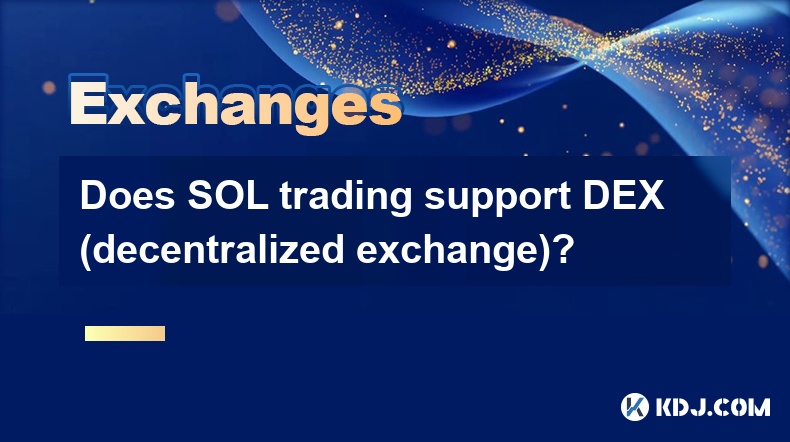
Does SOL trading support DEX (decentralized exchange)?
Apr 19,2025 at 05:21am
Solana (SOL), a high-performance blockchain platform, has gained significant attention in the cryptocurrency community for its fast transaction speeds and low fees. One of the key aspects that traders and investors often inquire about is whether SOL trading supports decentralized exchanges (DEXs). In this article, we will explore this topic in detail, p...
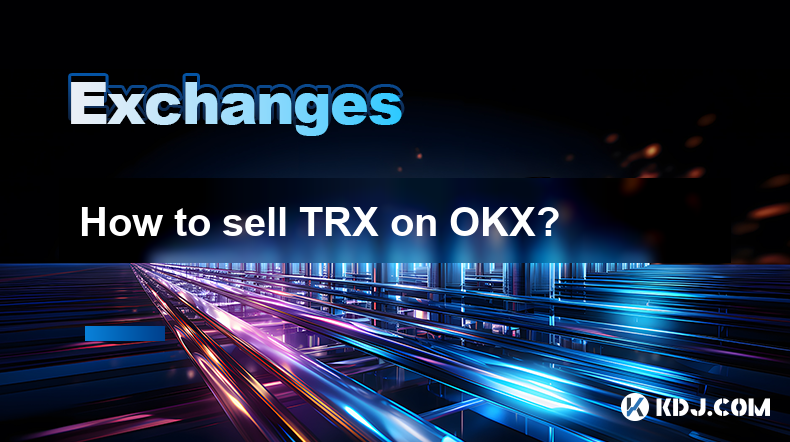
How to sell TRX on OKX?
Apr 18,2025 at 11:07pm
Selling TRX on OKX is a straightforward process that can be completed in a few simple steps. This article will guide you through the entire process, ensuring that you understand each step thoroughly. Whether you are a beginner or an experienced trader, this guide will help you navigate the OKX platform with ease. Preparing to Sell TRX on OKXBefore you c...
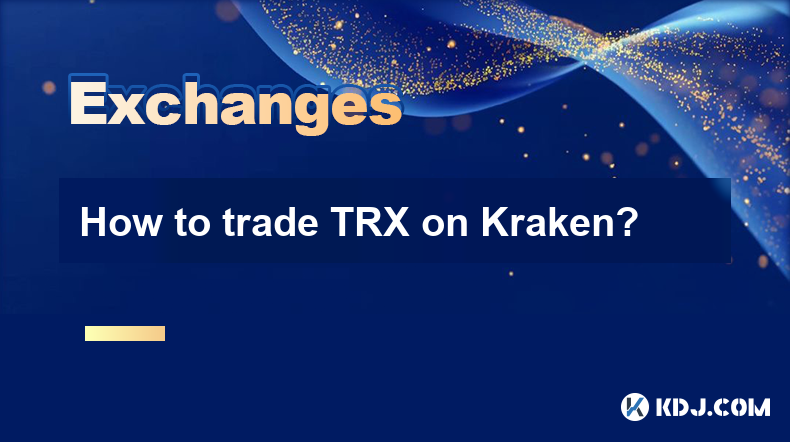
How to trade TRX on Kraken?
Apr 19,2025 at 02:00am
Trading TRX on Kraken involves several steps, from setting up your account to executing your first trade. Here's a detailed guide on how to get started and successfully trade TRX on the Kraken platform. Setting Up Your Kraken AccountBefore you can start trading TRX on Kraken, you need to set up an account. Here's how to do it: Visit the Kraken website a...
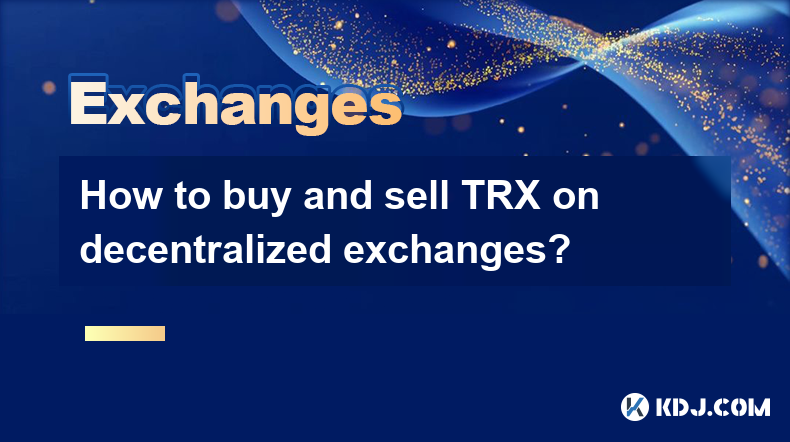
How to buy and sell TRX on decentralized exchanges?
Apr 18,2025 at 08:08pm
Introduction to TRX and Decentralized ExchangesTRX, or Tron, is a popular cryptocurrency that aims to build a decentralized internet and entertainment ecosystem. Decentralized exchanges (DEXs) offer a way to trade cryptocurrencies like TRX without the need for a central authority, providing greater privacy and control over your funds. In this article, w...
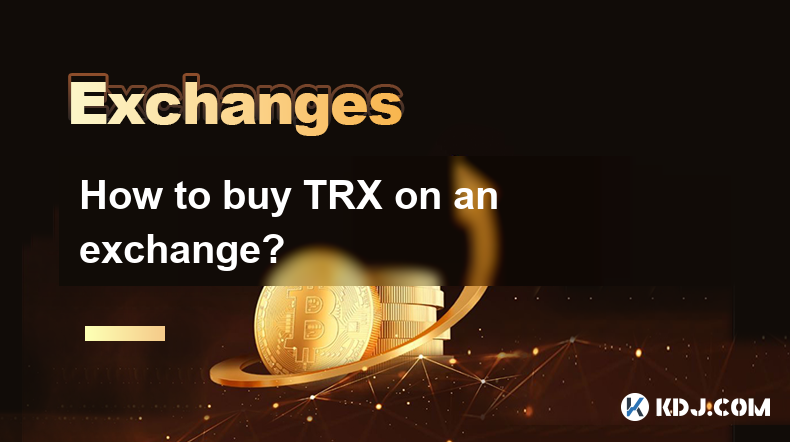
How to buy TRX on an exchange?
Apr 19,2025 at 12:08pm
Buying TRX, the native cryptocurrency of the Tron network, on an exchange is a straightforward process that involves several key steps. This guide will walk you through the process of purchasing TRX, ensuring you understand each step thoroughly. Choosing a Reliable ExchangeBefore you can buy TRX, you need to select a reputable cryptocurrency exchange th...
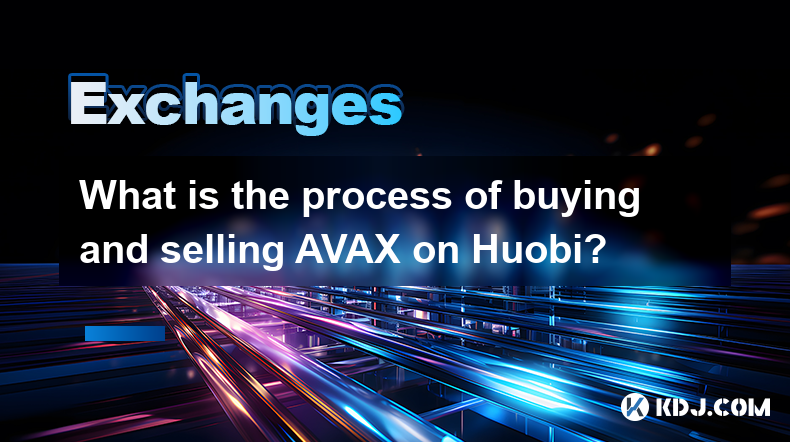
What is the process of buying and selling AVAX on Huobi?
Apr 18,2025 at 07:50pm
Understanding AVAX and Huobi Before diving into the process of buying and selling AVAX on Huobi, it's essential to understand what these terms mean. AVAX is the native cryptocurrency of the Avalanche blockchain, a platform designed for decentralized applications and custom blockchain networks. Huobi, on the other hand, is a leading global cryptocurrency...

Does SOL trading support DEX (decentralized exchange)?
Apr 19,2025 at 05:21am
Solana (SOL), a high-performance blockchain platform, has gained significant attention in the cryptocurrency community for its fast transaction speeds and low fees. One of the key aspects that traders and investors often inquire about is whether SOL trading supports decentralized exchanges (DEXs). In this article, we will explore this topic in detail, p...

How to sell TRX on OKX?
Apr 18,2025 at 11:07pm
Selling TRX on OKX is a straightforward process that can be completed in a few simple steps. This article will guide you through the entire process, ensuring that you understand each step thoroughly. Whether you are a beginner or an experienced trader, this guide will help you navigate the OKX platform with ease. Preparing to Sell TRX on OKXBefore you c...

How to trade TRX on Kraken?
Apr 19,2025 at 02:00am
Trading TRX on Kraken involves several steps, from setting up your account to executing your first trade. Here's a detailed guide on how to get started and successfully trade TRX on the Kraken platform. Setting Up Your Kraken AccountBefore you can start trading TRX on Kraken, you need to set up an account. Here's how to do it: Visit the Kraken website a...

How to buy and sell TRX on decentralized exchanges?
Apr 18,2025 at 08:08pm
Introduction to TRX and Decentralized ExchangesTRX, or Tron, is a popular cryptocurrency that aims to build a decentralized internet and entertainment ecosystem. Decentralized exchanges (DEXs) offer a way to trade cryptocurrencies like TRX without the need for a central authority, providing greater privacy and control over your funds. In this article, w...

How to buy TRX on an exchange?
Apr 19,2025 at 12:08pm
Buying TRX, the native cryptocurrency of the Tron network, on an exchange is a straightforward process that involves several key steps. This guide will walk you through the process of purchasing TRX, ensuring you understand each step thoroughly. Choosing a Reliable ExchangeBefore you can buy TRX, you need to select a reputable cryptocurrency exchange th...

What is the process of buying and selling AVAX on Huobi?
Apr 18,2025 at 07:50pm
Understanding AVAX and Huobi Before diving into the process of buying and selling AVAX on Huobi, it's essential to understand what these terms mean. AVAX is the native cryptocurrency of the Avalanche blockchain, a platform designed for decentralized applications and custom blockchain networks. Huobi, on the other hand, is a leading global cryptocurrency...
See all articles
























































































